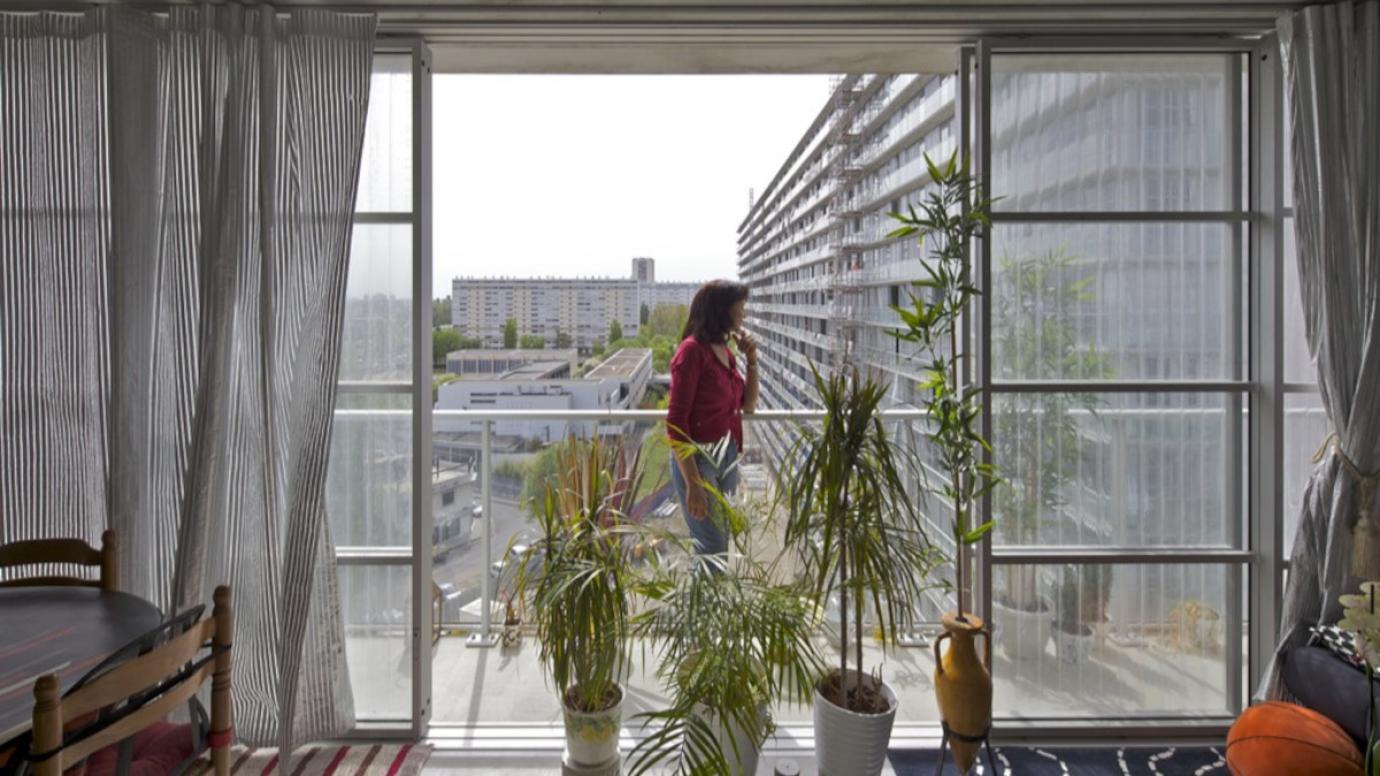Bordeaux: a new life for 530 homes
Towards spacious, comfortable, and energy-efficient housing in Bordeaux.
- Country:
-
 France
France
- Type of project :
- Heritage
- Housing
- Sustainability
- Size of city/region:
- 200 000 inhabitants to 1 million inhabitants

Key facts
Architecture studios: Lacaton & Vassal architectes, Frédéric Druot Architecture and Christophe Hutin Architecture
Main sponsor: Bordeaux metropolis
Year completed: 2017
Materials: concrete, glass, polycarbonate
Total area: 23,745 m2
Prizes:
- 2016 Living places Simon Architecture Prize: winner
- 2019 European Union Prize for Contemporary Architecture – Mies van der Rohe Award: winner
City / regional background
Located 800 metres from the historic centre of the city, Grand Parc is a complex of 4,000 housing units (22-storey towers and bars) labelled “Remarkable contemporary architecture”.
Reflection on the future of the Grand Parc district began in 2011. This process included public consultation, preparatory study and a coordinated action plan between the city, metropolis, donors (Aquitanis, InCité, CDC Habitat), and the Bordeaux Nord Aquitaine Polyclinic.
The result was a global project to rehabilitate 3,500 housing units, demolish 56 units and build 1 000 more, construct and rehabilitate public facilities (nursery, gymnasiums, community halls), and restructure and requalify public spaces. These efforts would restore this working-class district’s ability to attract new inhabitants by revealing its qualities.
The 3 blocks of 530 social housing dwellings “Gounod, Haendel and Ingres - G,H,I” were built between 1954-1975. They needed renovation after their demolition had been ruled out. Aquitanis, the metropolitan social housing operator, with the support of the city of Bordeaux and Bordeaux Metropolis, decided to transform them and make them more sustainable while improving the quality of life of inhabitants for a limited cost.
Solution
The first step was to extend the existing structure. Winter gardens and balconies were grafted to the buildings, offering residents light and an additional 30m² space, accessible through large, glazed sliding doors connecting every room to the winter garden. These changes offered a pleasant private semi-outdoor space while improving the buildings’ energy performance.
Behind the new floor-to-ceiling glass, thermal curtains provide extra insulation. On the other side, a lightweight façade of transparent, corrugated polycarbonate panels and glass in aluminium frames were assembled and equipped with reflective solar curtains. Inside the apartments, bathrooms and the electrical installation were upgraded. Outside, new lifts were built, access halls were created, and the gardens were improved.
Proper planning and scheduling, and the use of prefabricated modules allowed for each apartment to be renovated in a 12–16-day period, allowing inhabitants to remain in their dwelling during the work.
Criteria for high-quality (context, sense of place, diversity, beauty)
- The transformation of the dwellings optimises the dimensions, light, views and comfort of the apartments, without modifying the existing structural organisation, in compliance with ‘Bordeaux, Port of the Moon' World Heritage status.
- Preserving existing buildings without carrying out heavy work meant the project could concentrate the budget on the extensions, since these were key to improving the quality of the dwellings in a significant and sustainable way.
- More than 1,000 people participated in the consultation to help specify resident and user expectations. Aquitanis appointed a mediator to facilitate communication between the tenants and the project team.
- The innovative renovation has radically improved the space and quality of life of its occupants without making any compromises.
- The regeneration aimed at changing the image of the neighbourhood and maintaining the supply of affordable housing while diversifying the profile of its inhabitants.
Governance and management
Promoting architectural, urban, landscape and heritage quality is a priority for Bordeaux metropolis and city. It is enshrined in the complementary action plan of the management plan for Bordeaux, Port of the Moon, listed as World Heritage since 2007.
The Grand Parc Regeneration plan was initiated by Bordeaux Métropole and the City of Bordeaux and supported by Aquitanis.
The city set up a project team assisted by a landscape designer and an architect who monitors the various operations carried out in the district. This team ensures that projects are in line with the objectives collectively defined for the requalification of Grand Parc and that they are respectful of its urban and heritage features.
About 30 people worked on the implementation of the project in the local administration: departments of urban development and urban planning and housing, the Bordeaux UNESCO Local Committee, a consulting architect, and the project team.
Budget and financing
€35 million for renovation of existing housing units
- Aquitanis provided 77.9 % of the budget (€27.65 million)
- Bordeaux metropolis 17.7% (€6.2 million)
- the Nouvelle Aquitaine Region 2.3 % (€795,000)
- the European Regional Development Fund 2.1 % (€737,000).
€1.6 million for new housing units
- Aquitanis provided 94.5 % of the budget (€1.525 million)
- Bordeaux metropolis 4.8% (€76,800)
- Action Logement (a group formed by the French government with social partner organisations to support access to housing) 0.7 % (€12,000).
Transferable ideas
The GHI transformation reflects an inventive practice of conservation and illustrates how architectural creation can extend the history of a building or urban ensemble while transforming it in a significant way. It also demonstrates that with openness and creativity, 20th century architectural heritage can meet today's needs, avoiding costly and environmentally harmful demolitions.
Tips from the city
- In the context of the climate crisis and resource scarcity, demolition can no longer be considered an option.
- Before getting in a regeneration project of this scale, consider its benefits at urban and social levels. Such project comes with a cost but also with high social, environmental and heritage value.
- Public consultation is indispensable in a project targeting heritage buildings. The local sense of place and shared history will inform your project.


